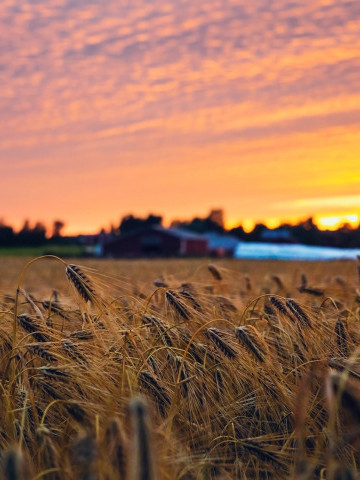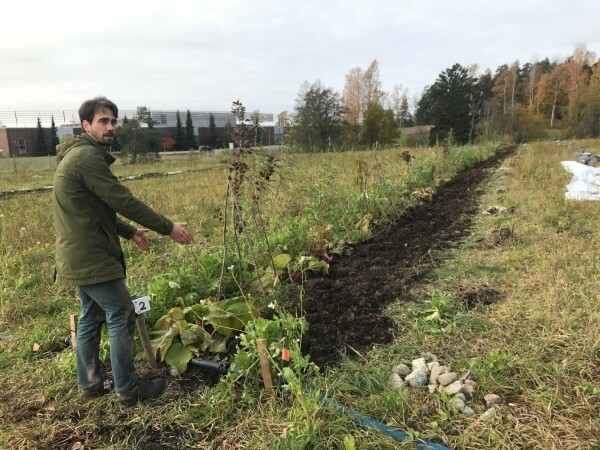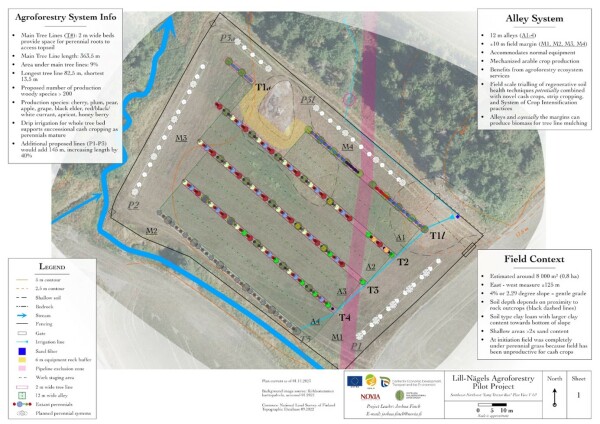
Bioekonomi
I bloggen Bioekonomi får du veta mer om Yrkeshögskolan Novias forsknings-, utvecklings- och innovationsverksamhet inom forskningsområdet systemomställning för att bygga resiliens. Majoriteten av personalen finns huvudsakligen i Raseborg. Här bildar forskare, projektarbetare, lärare, studerande och administrativ personal en dynamisk helhet. På vår blogg kan du läsa om vilka vi är, vad vi gör och om våra resultat. Välkommen!
Vid frågor eller feedback kontakta bloggens administratör Heidi Barman-Geust (Heidi.barman-geust(a)novia.fi)
Vi följer CC BY 4.0 om inget annat nämns.
Systemic Transformation to Build Resilience is one of Novia University of Applied Sciences six' research areas. The activity is mostly located in Raseborg, in southern Finland. As a dynamic unity, our researchers, project workers, teachers, students and administrative personnel produce versatile results in research, development and innovation. We blog about who we are, what we do, what our conclusions are, and how we implement them. Welcome!
If you have questions, please contact Heidi Barman (Heidi.barman-geust(a)novia.fi)
We folllow CC BY 4.0 if nothing else is stated.
This is how you spark new collaboration - When spatial data meets innovative farming system

My name is Aurélie, I’m a geographer specialised in geo-informatics. I’m a new team leader for the expertise of spatial planning at the faculty of Bioeconomy and a new project leader at Novia UAS. The objective I need to reach is to develop awareness and competence about geographic information. Geographic information can tell you anything you want to know about any location you like; and that information is crucial to act efficiently every day.

On October 24, 2023, I got the opportunity to visit Lill-Nägels agroforestry pilot project farm situated in Kirkkonummi, southern Finland, and to meet Joshua Finch, the project leader at Novia UAS, who was presenting the philosophy of the pilot project. As I will join him in the next steps as a GIS-specialist and, as a novice in agroforestry, I wanted to know more about the technicalities behind this innovative farming system. I was so amazed by this visit I thought I would share the experience.
Picture this, we are just outside the Helsinki Metropolitan Area and yet, once leaving the highway we are immediately in the countryside. Marianne Fred from Novia and two representatives from Livia Paula Kohijoki and Juha Ujula are also joining, starting with a coffee and some bullar. We quickly reach the site, about 8 000 square meters of land owned by project partner, Rikard Korkman, with a South-West exposure and no direct access to water. Immediately, we sense how Joshua is so excited to talk about the project and with reasons. E-V-E-R-Y single thing has been thought and if it’s the norm in this type of farming the so-called SCI: system of crop intensification, for me, it was just fascinating. Every space of the land has been dedicated with a purpose, every way of doing has been thought innovatively.
 Joshua is explaining to us how every level of vegetation has its own role and importance. Credit: Aurelie Noel.
Joshua is explaining to us how every level of vegetation has its own role and importance. Credit: Aurelie Noel.
Beyond the common requirements linked to sustainable (1) and regenerative (2) agroforestry (3), Joshua also considered strip cropping (4) and polyculture (5), and will take advantage of the margins of the productive field by hosting perennials and flowers and maybe egg-laying hens (why not!).
Let’s start with the tree lines and their potential synergy (6). You want examples, well, get this. The types of trees have been chosen so that the shade of the canopy won’t impede the crops underneath from growing while fostering coolness on hotter days. Another one: Joshua planted willows and the idea is to trim them often so then, when pruned, the tree enables comingled growth signals, also beneficial for other species (don’t ask me how this coppicing (7) works, but it does).
What about irrigation if there is no water on site? “Water is collected from a nearby pond, filtered and distributed with a modulable drip irrigation system; and is fair to use for irrigation”. But what would you do in case of drought like last year? “There may be ways to treat seeds on the farm to improve germination under dry conditions. Also, we will try to get the field prepared and planted sooner so that we benefit from the snowmelt. Finally, for every additional percent of organic matter in the soil, the water holding increases by 100 000 L/ha (8). So, let’s get this soil built!”
Herbivores nuisance you say: “we have a fence for hares, foxes, and deer”. But what about mice: “We will apply rodent-protecting meshes around the base of each production tree this autumn to protect them during the winter; for below-ground damage from other rodents, we are working to find a good depth of mulch to protect the soil while not creating optimal conditions for the rodents. This is a challenge in our climate as decomposition rates are so low and rodents are so adaptable. We could also install owl boxes, and they would feast on those rodents”.
Ok… That’s for the environmental part of the project but what about the other pillars of sustainability: economic and social? “We could involve the public to support the project both ways: Beyond selling our products via sustainable networks such as REKO, the community supports us with a system where consumers "adopt a tree" that involves them to pick, creating that warm spirit of community and self-sufficiency. This way they also help finance the work of maintaining the system by paying in advance (typically one tries to sell the memberships during the winter for cash flow when there are no products to sell).
He has an answer for EVERYTHING.
If you want more details (9) and tips on unconventional ways of doing, please consult Lill-Nägels webpage or join the final seminar in-person or online on December 1st, 2023. Joshua also has his own website: https://www.finchagroecology.com/ !
If you want to learn more about other initiatives at Novia working towards sustainability, check this coming lecture about nettle on November 2 and this seminar about natural fibres on December 1; and stay tuned as a dedicated Novia Forum is coming up early next year. Finally, to know more about my own project, you can read this blog and fill in this survey.
Some definitions I had to check for myself:
1. That meets the needs of the present without compromising the ability of future generations to meet their own needs (UN, 1987).
2. Notably by nurturing and restoring soil health
3. Intentional integration of trees and shrubs into crop systems
4. Cultivating different kinds of crop together (row and sown crops)
5. Simultaneous cultivation or exploitation of plants
6. Interaction or cooperation of two or more agents or substances to produce a combined effect greater than the sum of their separate effects.
7. Deliberate cutting of woody plants for harvesting resprouting materials.
8. The current level is 2,5% and we would like to reach 5 to 8%
9. About soil replenishment and fertility, tree mulching, foliar spraying, mechanical arable crop tools (such as a gridder), sustainable farming and ecological processes.
 Localisation of Lill-Nägels pilot project. Source: Aurelie Noel, created with QGIS, 2023
Localisation of Lill-Nägels pilot project. Source: Aurelie Noel, created with QGIS, 2023
 Summary of projected Lill-Nägels agroforestry pilot project. Source: Joshua Finch, created with Affinity Designer 2 from Serif, 2023
Summary of projected Lill-Nägels agroforestry pilot project. Source: Joshua Finch, created with Affinity Designer 2 from Serif, 2023
Texten har granskats av Novias campusredaktion och publicerats 30.11.2023
![]()
Bioekonomi
Blogginlägg som är granskat av Novias redaktionsråd är utmärkta med nyckelordet "Granskat inlägg".
Vi följer CC-BY 4.0 om inget annat nämns.
Ansvarsfriskrivning: Författaren/författarna ansvarar för för fakta, möjlig utebliven information och innehållets korrekthet i bloggen. Texterna har genomgått en granskning, men de åsikter som uttrycks är författarens egna och återspeglar inte nödvändigtvis Yrkeshögskolan Novias ståndpunkter.
Disclaimer: The author(s) are responsible for the facts, any possible omissions, and the accuracy of the content in the blog.The texts have undergone a review, however, the opinions expressed are those of the author and do not necessarily reflect the views of Novia University of Applied Sciences.